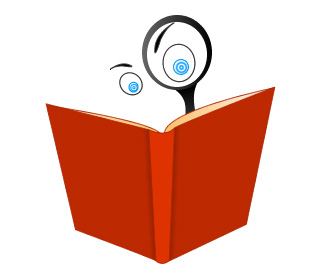
Search
Statistics
We have 222 registered usersThe newest registered user is raheelmemon
Our users have posted a total of 1140 messages in 613 subjects
If you are seeing this, you have attempted to link to the UpToDate widget but are experiencing a problem. Please visit UpToDate for more information.

Video: Abnormal Involuntary Movement Scale (AIMS)
FORUM FOR PSYCHIATRY RESIDENTS :: Psychiatry :: Psychiatry-Neurology-Psychology discussion :: Psychiatry Video Lectures
Page 1 of 1
 Video: Abnormal Involuntary Movement Scale (AIMS)
Video: Abnormal Involuntary Movement Scale (AIMS)
Abnormal Involuntary Movement Scale (AIMS)

CODE:
0 = None
1 = Minimal, may be extreme normal
2 = Mild
3 = Moderate
4 - Severe
MOVEMENT RATINGS: Rate highest severity observed. Rate movements that occur upon activation one less than those observed
spontaneously.
| Facial and Oral Movements | 1. Muscles of Facial Expression e.g. movements of forehead, eyebrows periorbital area, cheeks, including frowning blinking, smiling, grimacing | 0 1 2 3 4 |
| 2. Lips and Perioral Area e.g., puckering, pouting, smacking | 0 1 2 3 4 | |
| 3. Jaw e.g. biting, clenching, chewing, mouth opening, lateral movement | 0 1 2 3 4 | |
| 4. Tongue Rate only increases in movement both in and out of mouth. NOT inability to sustain movement. Darting in and out of mouth. | 0 1 2 3 4 | |
| Extremity Movements | 5. Upper (arms, wrists,, hands, fingers) Include choreic movements (i.e., rapid, objectively purposeless, irregular, spontaneous) athetoid movements (i.e., slow, irregular, complex, serpentine). DO NOT INCLUDE TREMOR (i.e., repetitive, regular, rhythmic) | 0 1 2 3 4 |
| 6. Lower (legs, knees, ankles, toes) e.g., lateral knee movement, foot tapping, heel dropping, foot squirming, inversion and eversion of foot. | 0 1 2 3 4 | |
| Trunk Movements | 7. Neck, shoulders, hips e.g., rocking, twisting, squirming, pelvic gyrations | 0 1 2 3 4 |
| Global Judgments | 8. Severity of abnormal movements overall | 0 1 2 3 4 |
| 9. Incapacitation due to abnormal movements | 0 1 2 3 4 | |
| 10. Patient’s awareness of abnormal movements. Rate only patient’s report No awareness 0 Aware, no distress 1 Aware, mild distress 2 Aware, moderate distress 3 Aware, severe distress 4 | 0 1 2 3 4 | |
| Dental Status | 11. Current problems with teeth and/or dentures | No Yes |
| 12. Are dentures usually worn? | No Yes | |
| 13. Edentia? | No Yes | |
| 14. Do movements disappear in sleep? | No Yes |
Video Explanation of Abnormal Involuntary Movement Scale (AIMS):
 Similar topics
Similar topics» AIMS: Abnormal Involuntary Movement Scale
» Video: Paws On A Mission
» Video: Tongue Faciculations
» Video Explanation of Catatonia
» Video: Seasonal Affective Disorder (SAD)
» Video: Paws On A Mission
» Video: Tongue Faciculations
» Video Explanation of Catatonia
» Video: Seasonal Affective Disorder (SAD)
FORUM FOR PSYCHIATRY RESIDENTS :: Psychiatry :: Psychiatry-Neurology-Psychology discussion :: Psychiatry Video Lectures
Page 1 of 1
Permissions in this forum:
You cannot reply to topics in this forum

» L-Methylfolate: Who Will benefit
» Vitamins & Supplements in Clinical Practice.
» Imaging Biomarkers for Outcomes in Mild TBI
» Q.5 Clozapine Neutopenia
» Treating Disorders!
» Cortical Abnormalities in Adults & Adolescents with MDD
» Efficacy of Antipsychotics in Pediatric Acute Mania
» Obsessive Compulsive Disorder in Adults: Which Treatment is Better?